How to Put a Food Handlers Card on a Resume
Here’s how to include a food handlers card on your resume — even if you haven’t earned it yet — so you can stand out to potential employers.
Simple tips and advice for food handlers to keep food safe and follow guidelines.

Here’s how to include a food handlers card on your resume — even if you haven’t earned it yet — so you can stand out to potential employers.

This article explains how long chicken can safely sit out and provides tips to reduce your risk of foodborne illness from consuming it.

This article explains whether you can get a food handlers card for free and discusses the benefits of investing in valid food handler training.

This article discusses everything you need to know about Florida’s long-term care food safety training requirements.

This article breaks down whether you need a food handlers card to operate a food truck and discusses best food safety practices.

This article explains whether you need a food handlers card to sell coffee and lists the steps to earning one fast.

This article breaks down why earning your food handlers card is easier than you think and how to go about earning one fast.

This article breaks down whether you can use PayPal to get a food handlers card and explains who has to pay for your food handlers card.

This article lists the top ServSafe alternatives and what they’re all about so you can determine which is best for you.

This article discusses everything you need to know about FoodSafePal, including whether the training it offers is legit and trustworthy.

En este artículo se explica todo lo que necesita saber sobre el carné de manipulador de alimentos: qué es, cómo obtenerlo en español, etc.
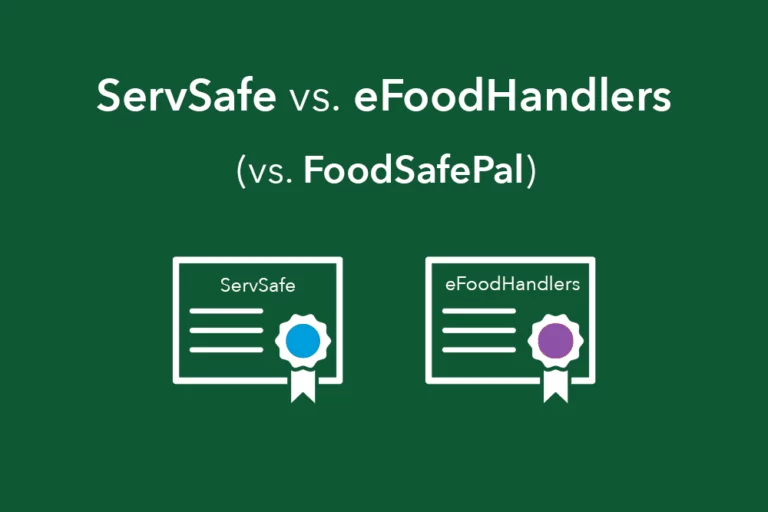
This article explains how ServSafe and eFoodHandlers (and FoodSafePal) compare and discusses how to choose the best one for your food safety training needs.

This article explains how ServSafe and StateFoodSafety (and FoodSafePal) compare and discusses how to choose the best one for your food safety training needs.

This article breaks down everything you need to know about ServSafe and 360training (and FoodSafePal), and discusses how to choose the best one for your food safety training needs.
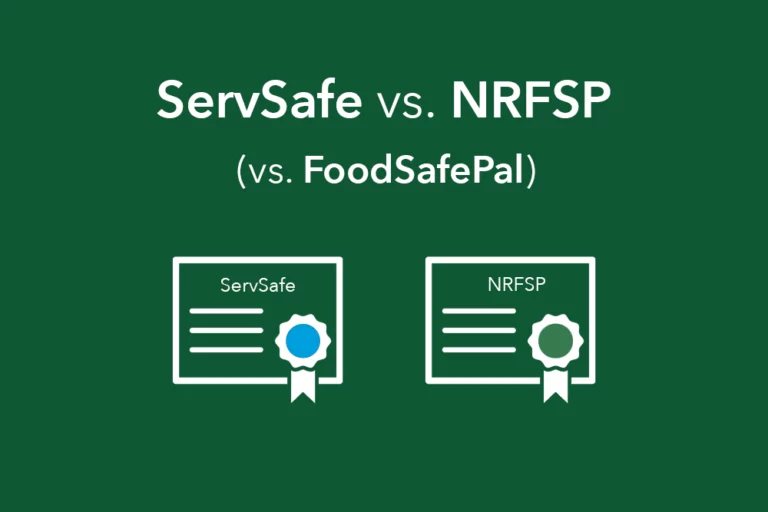
This article breaks down everything you need to know about ServSafe and the NRSFP (and FoodSafePal), and discusses how to choose the best one for your food safety training needs.

This article explains what a food handlers card license number is and its purpose as well as where you can find it.

This article explains how to check if your food handlers card is expired and provides step-by-step directions on how to renew it when it’s time.

This article breaks down whether you can work without a food handlers card and what could happen if work without one.

This article explains the significance of the website from which you obtain a food handler’s card and provides guidance on how to obtain one that is approved by your health department.

This article breaks down whether you can get a food handlers card in one day, and the best way to earn one as fast as possible.

This article breaks down whether you can get a food handlers card anywhere and how to earn one depending on where you live.

This article explains whether it’s necessary or beneficial to get a food handlers card before applying to a job in foodservice.

This article explains whether you need a food handlers card to work at Baskin Robins, and if so, how to get one.
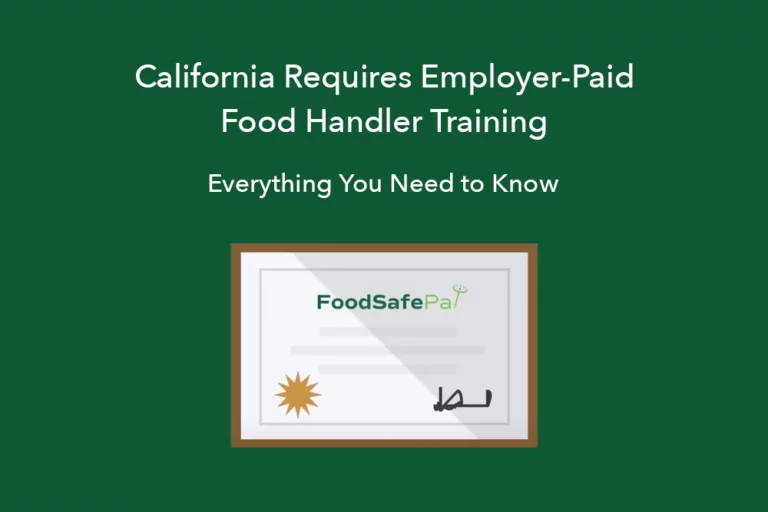
This article explains everything you need to know about California’s SB 476, which requires employer-paid food handler training, and provides an action plan to ensure compliance with the law.

This article explains whether you need a food handlers card to work at a grocery store, and if so, how to earn one.

This article explains whether you need a food handlers card to work at McDonald’s, and if so, how to get one.

This article explains how ServSafe and FoodSafePal compare and differ so you can determine which one suits your food safety training needs best.

This article explains whether a food handlers card is the same as ServSafe, and discusses the options you have to earn a food handlers card.

This article discusses whether all food handlers cards are the same, and how to make sure you earn the right food handler card for your job.

This article discusses how old you have to be to get a food handlers card, and the steps you can take to earn one.

This article explains the difference between a food handler card and certificate, and how you can earn them by completing a food handler course.

This article explains whether you need a food handlers card to work at a restaurant, and if so, how to earn one.

This article explains whether you need a food handlers card to be a hostess, and if so, how you can earn one.

This article explains whether you need a food handlers card to work in fast food, and if so, how to earn one.

This article explains whether you need a food handlers card to be a cashier, and if so, how you can earn one.

This article explains whether food handler cards transfer states, and, if so, among which states.

This article explains whether you or your employer has to pay for your food handler card as well as how to earn your food handlers card.

This article explains whether you need a food handlers card to sell baked goods, and if so, how to earn one to stay compliant with your state’s cottage food laws.

This article explains whether you need a food handlers card to work at Chipotle, and if so, how you can get one.

This article explains whether you need a food handlers card to work at Dunkin’, and if so, how you can get one.

This article explains whether you need a food handlers card to work at Taco Bell, and if so, how you can get one.

This article explains whether you need a food handlers card to work at Dutch Bros Coffee, and if so, how you can get one.

This article explains whether you need a food handlers card to work at Subway, and if so, how you can get one.

This article explains whether you need a food handlers card to work at Starbucks, and if so, how you can get one.

This article explains whether baristas need a food handler card, and if so, how to earn one.

This article explains whether servers need a food handler card, and if so, how to earn one.

This article explains whether bartenders need a food handler card, and if so, how to earn one.

This article explains whether dishwashers need a food handler card, and if so, how to earn one.

This article explains everything you need to know about the role of a food handler, focusing on their part in ensuring food safety.

Learn the purpose of a food handlers card and how earning one offers many benefits — even if your job or health department doesn’t require it.

This article provides detailed steps on how to renew your food handler card — fast and easily.

This article explains everything you need to know about an ANSI food handlers card, including how you can earn one.

This article discusses the best way to prevent poor food safety, and provides other tips to keep food safe at your food establishment.

This article lists the three ways by which you can thaw poultry safely, and provides other food safety tips for handling and cooking poultry.

This article explains who is required to wear a hair restraint while working, and provides other good personal hygiene tips.

This article explains how you should dry a food thermometer, and provides other tips for safe thermometer use and calibration.

This article explains everything you need to know about time-temperature abuse, including what it is and how to prevent it.

This article explains everything you need to know about time and temperature control for safety, and which foods items require these controls.

This article breaks down everything you need to know about FAT TOM for food safety.

This article explains the key difference between sanitizers and detergents, and when and how to use them safely and effectively.

This article explains when you should wear gloves as a food handler, how to properly don and doff them, and more.

This article explains everything you need to know about slacking food, including how to do it and how it differs from thawing.

This article explains everything you need to know about physical food hazards, including what they are and they occur and spread.

This article explains everything you need to know about chemical food hazards, including what they are and how they occur and spread.

This article explains everything you need to know about biological food hazards, including what they are and how they occur and spread.

This article explains where you’re allowed to wash your hands as a food handler.

This article highlights the top 5 undeniable benefits of earning your food handler card.

This article explains how long it takes to get a food handlers card, how long it lasts, and how to earn your food handlers card.

This article explains everything you need to know about a food handlers card, including what it is, how to get one, and more.

This article explains everything you need to know about food safety for self-service restaurants, such as buffets and salad bars.

Learn everything you need to know about how to keep food brought in from outside sources safe at your nursing home or long-term care center.

This article lists the top 10 food safety principles you must know to pass your food handler test — the first time.

This article explains everything you need to know about nursing home food temperature regulations to keep residents safe from foodborne illnesses.

This article lists the top 10 mistakes food handlers make in nursing homes and what you can do to prevent them.

This article explains everything you need to know about food safety guidelines for dry storage.

This article explains everything you need to know about food labeling and dating for food safety.

This article explains what you to do if you lose your food handlers card and the steps you can take to never lose it again.

This article explains the five signs and symptoms you must report to your manager as a food handler to keep food safe.

This article discusses how long a food handlers card lasts and how to renew it to stay compliant with your health department.

This article explains everything you need to know about garbage containers — both inside and outside — and food safety.

This article explains everything you need to know about dishwashing temperature guidelines for food safety.

This article explains how to keep food safe during a power outage and how long you can safely keep refrigerated and frozen foods.

This article explains the difference between cleaning and sanitizing and why they are both necessary to keep food safe.

This article explains everything you need to know about food safety in nursing homes to keep your residents safe from foodborne illnesses.

Test your knowledge with this 10-question free food handler practice test (with answers).

This article explains everything you need to know about cross-contact, including how it occurs and what you can do to prevent it.

This article explains how you can keep food safe throughout its flow by preventing cross-contamination.

This article explains everything you need to know about ready-to-eat foods and provides 5 tips to handle them safely.

This article explains the basics of cutting board safety so you can keep those you serve safe.

This article summarizes the changes made to the 2022 FDA Food Code from the 2017 edition to keep you current on best food safety practices.
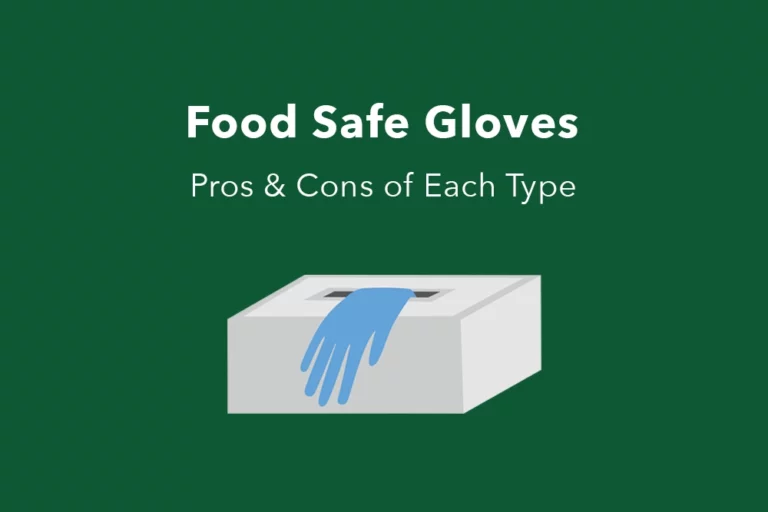
This article explains everything you need to know about food-safe gloves, including the pros and cons of the various types and how to use them properly.

This article explains everything food handlers need to know about the temperature danger zone and how to keep food safe.

As a food handler, you should know the big 6 foodborne pathogens, the symptoms they cause, the foods commonly associated with them, and how you can keep food safe from them.

This article explains everything food handlers need to know about the FIFO method for food storage and safety.

This article provides an overview of highly susceptible populations and what food handlers need to know to serve them safely.

This article lists the nine major food allergens, how to identify them, and how to keep your customers with food allergies safe by avoiding cross-contact.

This article explains everything food handlers need to know about pest control in food safety, including how to prevent pests and identify signs of an infestation.

This article provides an overview of the three chemical sanitizers approved for foodservice and how to use them correctly and safely.

This article explains how to use a 3-compartment sink, discussing the steps you must take to properly wash, rinse, and sanitize.

This article explains everything you need to know about reheating food safely so that you can keep the customers, patients, or residents you serve safe.

This article explains everything you need to know about holding temperatures for food to keep the customers, residents, and patients you serve safe as a food handler.

This article is your guide to everything you need to know about safe internal temperatures for meat, poultry, seafood, and other animal-based dishes.

This article explains the three ways you can thaw food safely to keep the customers, patients, or residents you serve safe as a food handler.

This article explains the steps and actions you need to take to receive food safely.

This article explains the role of personal hygiene in preventing foodborne illnesses and how to ensure good personal hygiene as a food handler.

This article provides an overview of the various types of food hazards with examples so you’re better prepared to keep food safe.

This article explains everything food handlers need to know about wearing gloves to keep food safe.

This article explains everything you need to know about the two-stage cooling method and why it’s important to prevent foodborne illnesses.
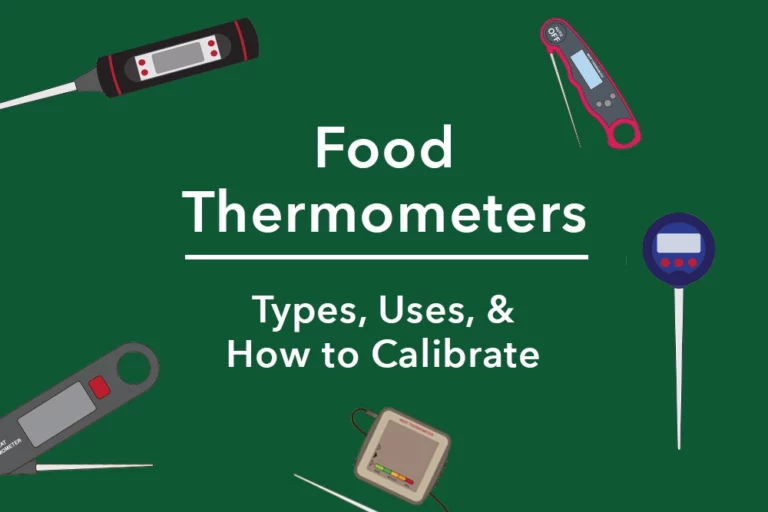
This article explains everything you need to know about food thermometers, discussing the various types as well as how and when to calibrate them.

This article explains everything you need to know about leftovers, including when to throw them out, how to label and store them properly, and how to make them last longer.

This article explains everything you need to know about proper fridge storage for food safety.

This article explains what TCS foods are, gives examples of them, and provides a free TCS poster.

This article explains everything you need to know about foodborne illnesses, including the types, causes, and symptoms.

This article provides an overview of the food handler card requirements by state so you can know whether you need to earn one for your job.

This article discusses the importance of handwashing and explains when, how, and where to wash your hands to prevent the spread of foodborne pathogens.